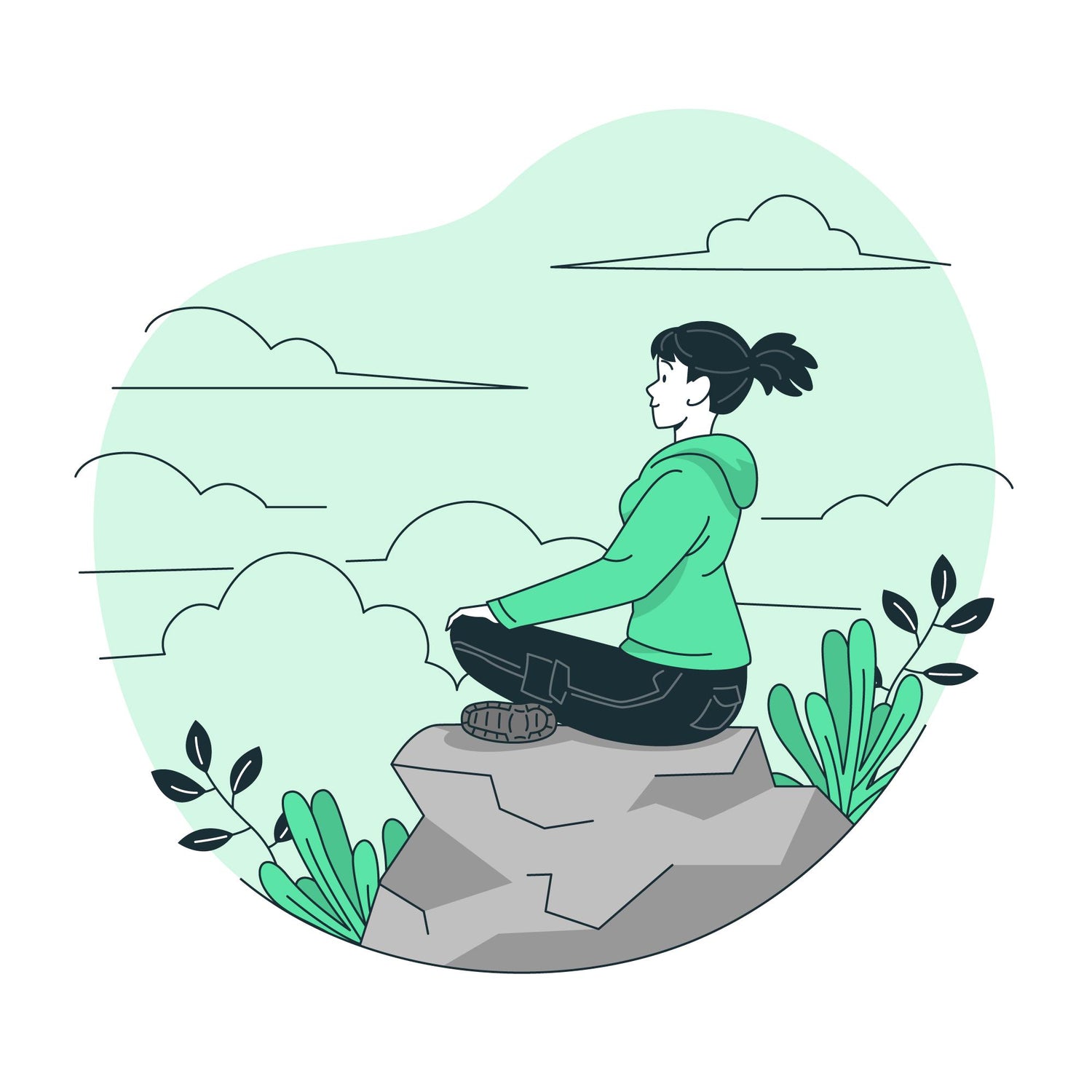Engaging in meditation brings profound and enduring advantages to our lives. It helps in reducing stress, allows us to understand our pain, enhances our connections, sharpens our focus, and fosters self-kindness. Allow us to guide you through the fundamental steps in our latest guide on how to meditate, designed to cultivate mindfulness.
Welcome to Our Guide on Mindful Meditation Our comprehensive guide on mindful meditation encompasses a range of meditation techniques, details the benefits of each style, and offers complimentary guided audio sessions to assist you in learning how to meditate. These resources are designed to help integrate meditation into your everyday routine. Continue reading to discover the essentials of this transformative practice, which can enhance the joy in your everyday experiences.
Understanding Meditation A concise overview of the practice.
How does one begin to meditate? In the practice of mindfulness meditation, the focus is on learning to be aware of the breath's movement in and out, and recognizing when our thoughts drift away from this focus. This act of repeatedly bringing our attention back to our breath strengthens our skills in attention and mindfulness.
By concentrating on our breathing, we train ourselves to return to and stay in the present moment, anchoring our awareness in the 'here and now' intentionally and without judgment.
Although the concept of mindfulness may seem straightforward, it requires patience to master. Celebrated meditation instructor Sharon Salzberg shares that her initial encounter with meditation revealed how quickly the mind can become engaged in different thoughts. "I wondered, maybe it will take around 800 breaths before my mind starts wandering? But to my surprise, it was just one breath, and I was already distracted," Salzberg recalls.
The Benefits of Learning How to Meditate
Key Advantages of Meditation
Meditation isn't a panacea, but it can offer a significant respite in our hectic lives. Often, this breathing room is all that's required to make healthier decisions for ourselves, our families, and our communities. The most essential elements to bring to your meditation practice are patience, self-compassion, and a comfortable spot to sit.
Meditation introduces profound and lasting benefits into our daily routine. Plus, it doesn't demand any special equipment or costly memberships.
Here are five key reasons to start meditating:
- Gain insight into your pain
- Reduce stress levels
- Enhance connections
- Sharpen focus
- Minimize mental noise
How to Meditate
Meditation is both simpler and more challenging than many anticipate. Follow these steps, find a peaceful spot where you can engage in this process, set a timer, and give it a try:
-
Choose a Place to Sit Select a calm and quiet location to sit.
-
Decide on a Time Limit For beginners, a short duration, like five or 10 minutes, is beneficial.
-
Be Aware of Your Body You can sit in a chair with your feet on the floor, sit cross-legged, or kneel. Just ensure you are comfortable and can maintain the position for some time.
-
Focus on Your Breath Pay attention to the sensation of your breath as it flows in and out.
-
Acknowledge Wandering Thoughts Your attention will naturally drift away from your breath to other thoughts. When you notice this, gently redirect your focus back to your breath.
-
Treat Your Wandering Mind with Kindness Avoid judging yourself or getting caught up in the thoughts you find yourself lost in. Simply return your focus to your breathing.
-
End with Compassion When you finish, slowly lift your gaze (or open your eyes if they were closed). Take a moment to observe the sounds around you, feel the state of your body, and acknowledge your thoughts and emotions.
That's the essence of the practice. You concentrate, your mind wanders, you bring it back, and you do this as gently as possible, as often as necessary.
How much should you meditate?
Meditation is as straightforward and as challenging as the steps previously outlined. It's both potent and rewarding. The crucial part is to make a commitment to meditate daily, even if it's just for five minutes. Meditation expert Sharon Salzberg notes, “The most significant moment in your meditation practice is when you decide to sit down and do it. That moment signifies that you believe in transformation, in self-care, and you're making these values tangible. You're not just theoretically valuing mindfulness or compassion, but actively bringing them into your life.”
In recent studies, neuroscientist Amishi Jha found that meditating for 12 minutes a day, five days a week, can enhance and safeguard your attention span.
Advice and Methods for Meditation
Thus far, we've covered the fundamental technique of breath-focused meditation. However, there are various other mindfulness methods that anchor our attention using different focal points. These can include external elements like a sound in the room, or more expansive practices like observing whatever comes to mind during a period of unstructured wandering. A common thread in all these techniques is the realization that our minds often take the lead. It's a common pattern: we think, and then we act. Here are some effective strategies to alter this dynamic:
Cultivating Mindfulness as a Habit
It's believed that 95% of our actions are automatic, driven by neural networks that transform our immense sensory input into simplified routines, enabling us to navigate our complex world. These ingrained brain patterns are so effective that they often lead us back to habitual behaviors before we even realize we had an alternative plan.
Mindfulness stands in stark contrast to these automatic processes. It represents conscious control over automatic responses, fostering deliberate actions, willpower, and decision-making. However, developing this mindful control requires practice. The more we engage our conscious brain, the stronger it becomes. Each time we perform a conscious, novel act, we stimulate neuroplasticity, activating our grey matter filled with new neurons that are not yet programmed for automatic responses.
The challenge lies in the fact that while our conscious brain knows what's best for us, our automatic brain tends to take the easy route. So, how do we activate mindfulness when it's most needed? This is where "behavior design" comes into play, a strategy to put our conscious brain in charge. This involves two approaches: first, slowing down the automatic brain by creating barriers to its pathways, and second, removing obstacles for the conscious brain, allowing it to take control.
Shifting this balance to empower the conscious brain requires effort. Here are some strategies to begin:
-
Place meditation reminders in your environment. If you plan to do yoga or meditate, position your yoga mat or meditation cushion in a prominent place where you'll see it often.
-
Keep your reminders fresh. If you're using sticky notes to prompt a new intention, change them regularly. Over time, the automatic brain tends to override these reminders. Write new notes, vary them, or add humor to make them more engaging and long-lasting.
-
Establish new patterns. Use "If this, then that" statements to create simple cues for engaging the conscious brain. For example, "If I see my office door, then take a deep breath," to initiate mindfulness as you start your workday, or "If the phone rings, pause and breathe before answering." Each deliberate act of shifting to mindfulness strengthens your conscious brain.
Introductory Meditation Techniques
Here are some basic meditation exercises to help you get started.
A Simple Meditation for Beginners Firstly, it's important to understand that the goal here is mindfulness, not to empty your mind of the myriad thoughts that buzz incessantly. Our aim is to practice focusing on our breath and returning to it when we notice our attention has drifted.
Find a comfortable position and prepare to sit still for a few minutes. Once you finish reading this, your task is to simply concentrate on your natural breathing process. Pay attention to your breath. Where do you feel it most distinctly? In your abdomen? In your nostrils? Try to maintain your focus on the sensations of your inhalation and exhalation. Spend two minutes following your breath. Inhale deeply, letting your belly expand, and then exhale slowly, feeling your belly contract. Welcome back. What did you notice? How long was it before your mind wandered from your breath? Were you aware of how active your mind was, even without deliberately directing it towards any specific thought? Did you catch yourself getting lost in thoughts before returning here? It's common to have involuntary narratives in our minds, like: “Why does my boss want to meet tomorrow?” “I should have gone to the gym yesterday.” “I need to pay some bills,” or the classic “I don’t have time to sit still, I’ve got things to do.”
If you encountered such distractions (and most of us do), you've stumbled upon a key realization: this is essentially the opposite of mindfulness. It happens when we live in our heads, on autopilot, letting our thoughts wander into the past or future, and not being fully present. Unfortunately, that's where many of us exist most of the time, often uncomfortably. But it doesn't have to be this way.
We "practice" mindfulness to learn to recognize when our minds start their usual gymnastics. By doing so, we can take a break from this constant activity and choose what to focus on. In essence, meditation fosters a healthier relationship with ourselves and, consequently, with others.
Guided Meditations for Beginners by FRQNCY's Instructor Mina Starr
Guided meditations are particularly beneficial for beginners, offering a point of focus and gentle guidance to ease into the practice and let go of self-criticism.
Embark on this guided meditation from FRQNCY's Instructor, Mina Starr:
Exploring Diverse Mindfulness Meditation Techniques
After getting acquainted with basic seated meditation, you might find interest in other forms of meditation, such as walking or lying down. Unlike the earlier meditations that focused on the breath, these practices concentrate on various parts of the body.
Getting Started with Body Scan Meditation Body Scan Meditation Here’s something to try: sense your feet on the ground at this moment. Whether you're in shoes or barefoot doesn't matter. Then, gradually scan through your entire body, piece by piece, all the way up to the top of your head. This practice is about connecting with your entire body: from your fingertips to your shoulders, from your buttocks to your toes. The only guidelines are to avoid judgment, curiosity, and worry (which your mind might naturally drift towards); simply tune in to the physical sensations of being in your body. Any discomfort or pain is okay. There's no need to act on anything; your role is merely to observe.
Body Scan Meditation
A concise practice for body awareness, encompassing sensations from head to toe. Begin directing your focus to different body parts. You can concentrate on a specific area or follow a sequence like this: toes, feet (soles, heels, tops), legs, pelvis, abdomen, lower back, upper back, chest, shoulders, arms down to the fingers, neck, various facial areas, and head. Spend a few moments on each body part, being aware of the sensations as you focus.
Whenever you notice your mind wandering, gently bring your attention back to the body part you last recall focusing on.
If you happen to fall asleep during this body scan, it's perfectly fine. Upon realizing you've dozed off, take a deep breath to reawaken and consider repositioning your body to help revive it. When you're ready, resume focusing on the body part where you left off.
Getting Started with the Mindful Walking Meditation
The Mindful Walking Meditation In our largely sedentary lifestyles, it's often necessary to incorporate physical activity into our daily routines. Mindfulness doesn't have to be another item on your checklist; it can be seamlessly integrated into activities you're already doing. Here's how you can incorporate mindful walking into your daily life.
The Mindful Walking Meditation
A practice of mindful movement, bringing awareness to the sensations of each step. Begin by walking at your usual pace. Place your hands in a comfortable position: on your abdomen, behind your back, or by your sides.
If it helps, you can count your steps up to 10, then start back at one. In a smaller space, when you reach ten, pause intentionally, then turn around when you're ready. Focus on the sensation of each foot lifting and falling. Be aware of the movements in your legs and the rest of your body. Notice any side-to-side shifts in your body. When your mind wanders to other thoughts, gently but firmly bring your attention back to the act of walking. It's normal for the mind to drift, so kindly redirect it as often as needed. Especially when walking outdoors, keep a broad awareness of your surroundings. Absorb the environment while staying safe and alert.
Introduction to Loving-Kindness Meditation
How to Practice Loving-Kindness Meditation It's important to recognize that you can't force yourself to feel certain emotions towards yourself or others. Instead, you can cultivate the habit of reminding yourself that you, just like everyone else, are deserving of happiness and ease.
A Loving-Kindness Meditation
Engage in this meditation to cultivate compassion towards yourself, those around you, and the wider world. The loving-kindness meditation involves quietly repeating phrases that bestow positive qualities upon oneself and others.
Begin by acknowledging your own positive actions. Recall instances where you acted with kindness, and allow yourself to take joy in these memories, celebrating the inherent potential for goodness in us all. Silently repeat phrases that resonate with your deepest wishes for yourself. Traditional phrases include: • May I live in safety. • May I experience mental happiness (peace, joy). • May I enjoy physical happiness (health, freedom from pain). • May I live with ease. Recite these phrases at a pace that feels natural, allowing space and silence between them to create a soothing rhythm. Focus on one phrase at a time. Whenever you find your mind wandering, respond with kindness towards yourself and gently return to the phrases, without self-criticism or judgment. After a while, imagine yourself at the center of a circle formed by individuals who have shown you kindness or inspired you with their love. This circle may include people you know personally, figures you've read about, or those from history or mythology. Feel yourself receiving their love and attention as you continue to softly repeat the loving-kindness phrases to yourself. To conclude, gradually release the visualization, but continue repeating the phrases for a few more minutes. Each repetition is a step towards transforming any negative self-relationships, propelled by the power of kindness.
Advancing in Your Meditation Journey
Guidance for Progressing in Mindfulness Meditation
As you delve into the practice of meditation, it's common to have questions arise. Here are some answers to frequently asked questions that might help clarify your meditation experience.
-
What if I need to scratch an itch during meditation? Yes, you can scratch it. However, first, try to address it mentally before resorting to physically scratching.
-
How should I breathe during meditation? The key is not to overthink your breathing. As long as you're breathing, you're doing fine. Let your breath flow naturally in a way that feels comfortable for you.
-
Is it better to meditate with my eyes open or closed? There's no strict rule here. Experiment with both. If open, keep a relaxed gaze, not focusing too intently on anything. If closed, avoid squeezing your eyelids and don't force any specific mental imagery.
-
What if I feel like I can't meditate? Feeling this way is actually a part of the meditation process. When such doubts arise, simply acknowledge them and gently return your focus to your breath. Remember, meditation is about returning to the breath, no matter how many times you get distracted.
-
Is it preferable to meditate alone or in a group? Both have their benefits. Group meditation can provide tremendous support, while solo practice helps build personal discipline.
-
When is the best time to meditate? The best time is what works best for you, considering your personal schedule and responsibilities. Be cautious, though, as the most convenient time can often be postponed to 'tomorrow.'
-
What should I do if I experience sexual or physical arousal during meditation? This is a normal part of the meditation experience. Meditation can activate the imagination, leading to various thoughts and sensations. Acknowledge them, then gently return your focus to your chosen meditation object, like your breath.
-
Any advice for including pets in meditation? Pets don't have to be seen as distractions to be avoided. If your pet enters the room and interacts with you during meditation, simply let it be part of the experience. However, if it becomes too disruptive, you might need to find a way to meditate without interruptions.








